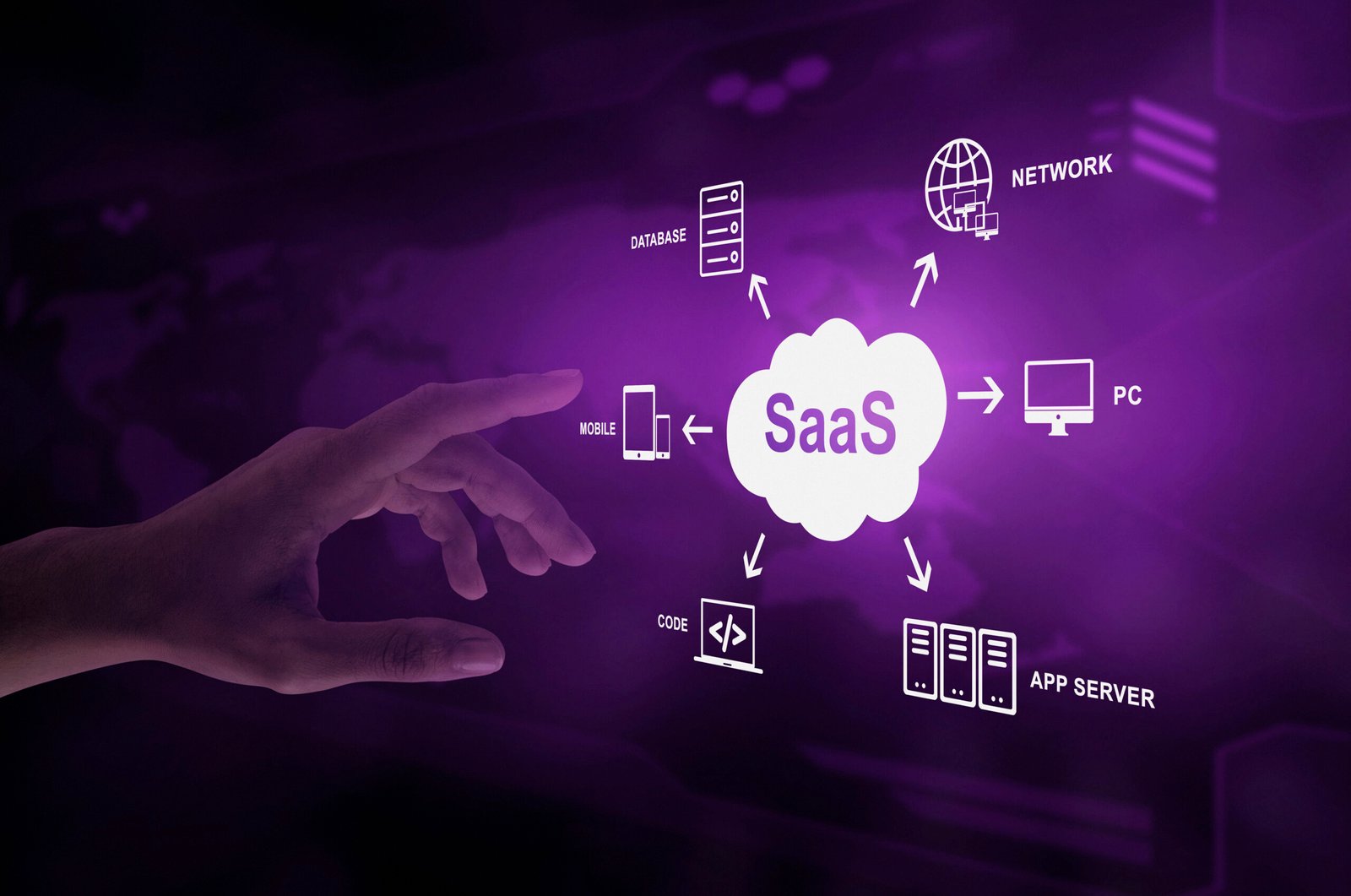SaaS has changed how businesses consume and use technology. The SaaS model delivers applications over the Internet, bypassing the need for complex software installations while offering businesses flexibility, scalability, and cost savings. Understanding the essential aspects of SaaS development is the only critical differences for enterprises looking to create innovative solutions. This post describes features, scalability, and innovation while associating them with modern development practices like cross-platform mobile app development, web application services, and many more.
What is SaaS Development?
SaaS development is the process of developing cloud-based applications that one can access via a web browser or mobile application. This model is used by almost every industry, including web apps development services as well as enterprise resource planning (ERP) solutions.
Key Features of SaaS Applications
Successful SaaS applications share common characteristics that optimize usability, scalability, and performance:
1. Multi-Tenancy Architecture
SaaS applications function according to a model of multi-tenancy, meaning a single application instance serves multiple users. This architecture ensures efficient resource usage and supports straightforward upgrades.
2. Access Across Platforms
The demand for cross-platform mobile apps has increased dramatically. Businesses need SaaS applications that work on desktops, tablets, and mobile devices. Cross-platform development frameworks ensure compatibility and boost user experience. Leading Mobility App Development Services companies, like AppVin Technologies, specialize in developing SaaS apps for multi-access platforms.
3. Scalability to Grow According to Expectations
One of the major advantages of SaaS is scalability. Whether your target is a startup or an enterprise, a well-designed SaaS application can scale to include a growing number of users and features without affecting performance.
4. Subscription-Based Pricing Model
Most SaaS applications are built on a subscription-based pricing model, making them cost-effective for businesses while ensuring recurring revenue for the provider.
5. Integration with Third-Party Tools
SaaS solutions must integrate with third-party tools such as CRMs, analytics platforms, and communication apps. It is essential to leverage custom web application development services for building robust APIs.
Scalability in SaaS Development
Scalability is one of the critical factors ensuring SaaS applications can support growth without requiring significant redevelopment efforts. Here’s how developers achieve scalability:
1. Microservices Architecture
Develop applications as a collection of independent services by adopting a microservices architecture. Each service can scale independently, allowing better resource management.
2. Cloud-Native Development
Using platforms like AWS, Microsoft Azure, or Google Cloud ensures elastic scaling benefits for SaaS applications. Web application development services are also integrated into these platforms, making resource allocation easier.
3. Cross-Platform Development for Reach
Compatibility of SaaS solutions across multiple devices encourages user interaction. Cross-platform mobile application development ensures proper functionality on iOS and Android through frameworks like Flutter or React Native. Companies looking for the best cross-platform mobile application development services can partner with firms like AppVin Technologies.
4. Database Optimization
Efficient database management is crucial for scalability. Distributed databases and data partitioning ensure availability and faster query responses.
Innovation in SaaS Development
In a competitive market, successful SaaS applications stand out through innovation. Here are some areas where innovation plays a role:
1. AI and Machine Learning
AI-powered features such as chatbots, predictive analytics, and personalized recommendations improve user experience and offer valuable insights.
2. Cross-Platform Development Frameworks
Cross-platform mobile application development allows developers to produce solutions faster and at a lower cost while reaching a larger audience. The best platform for mobile application development ensures both speed and quality.
3. Customization
Modern SaaS applications often provide customizable dashboards and workflows tailored to business needs. Using custom web application development services, companies can create solutions to meet specific industry requirements.
4. Security and Compliance
To ensure data protection, SaaS developers comply with regulations such as GDPR, HIPAA, or CCPA. Secure applications rely on web and app development services, creating encrypted and well-audited systems.
5. Offline Functionality with Hybrid Applications
Hybrid features enable users to perform specific actions offline by utilizing cross-platform functionality and progressive web apps (PWAs).
Why Cross-Platform and Web Application Development for SaaS?
Cross-platform development for SaaS applications offers several advantages:
- Savings: A single codebase reduces development and maintenance costs.
- Wider Reach: Applications work seamlessly across iOS, Android, and web platforms.
- Time-to-Market: Frameworks like Flutter and Xamarin enable quick product launches.
- Improved User Experience: A unified experience across devices boosts satisfaction.
Outsourcing web application development services ensures robust backend systems and API integrations—essential for a high-performing SaaS platform.
Steps to Develop a SaaS Application
1. Market Research and Validation
Understand your target audience and their needs. Identify market gaps that your SaaS solution can fill.
2. Design and Prototyping
Develop wireframes and prototypes for designing the user interface. Employ website application development services to deliver an intuitive experience.
3. Selecting the Right Tech Stack
Choose a scalable and high-performing tech stack. Popular options include:
- Backend: Node.js, Ruby on Rails, Python (Django).
- Frontend: React.js, Angular.
- Mobile: Flutter, React Native for cross-platform apps.
4. Development
Divide development into sprints for effective project management. Leverage custom web application development companies for specific needs.
5. Testing and QA
Conduct rigorous testing to ensure the application is secure, scalable, and bug-free.
6. Deployment and Monitoring
Deploy the application on cloud platforms to achieve full scalability. Integrate monitoring tools for performance and error tracking.
How AppVin Technologies Can Help
If you need a reliable partner for scalable SaaS solutions, AppVin Technologies offers end-to-end web and app development services. With expertise in custom web application development services, cross-platform mobile app development, and web applications development services, they can transform your ideas into innovative SaaS products.
Final Thoughts
Building a successful SaaS application requires cutting-edge technology, scalability, and innovation. Leveraging modern development practices such as cross-platform development and robust web application services ensures your solution stands out.
Partnering with a professional custom web app development company guarantees that your SaaS application meets business needs and user expectations. Join the SaaS revolution and unlock endless growth opportunities!



